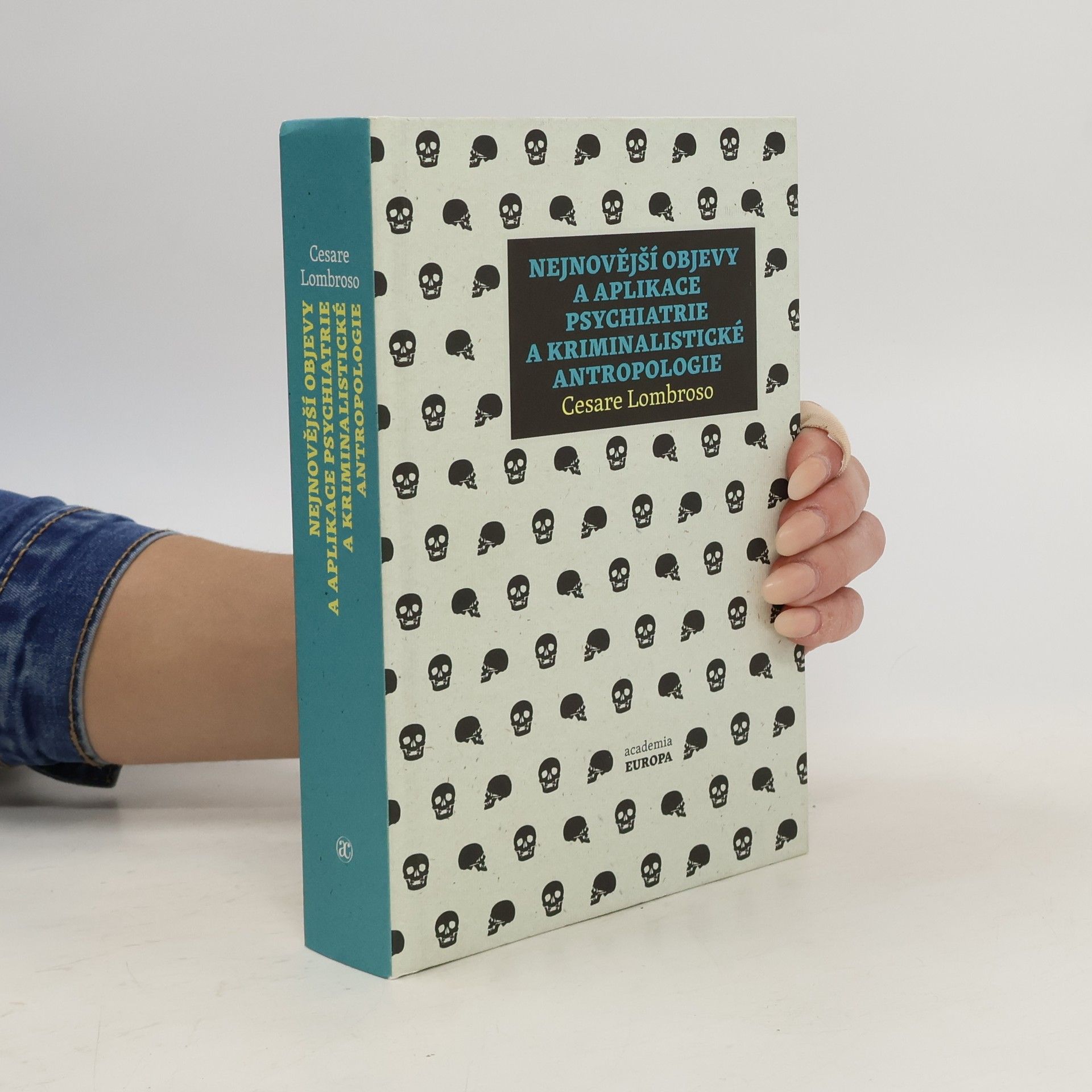Dílo obsahuje souhrn nejdůležitějších poznatků evropských vědeckých osobností nové školy inspirovaných Lombrosovým revolučním opusem Člověk - zločinec. V první části autor představuje nové objevy na poli antropologie, anatomie a duševních nemocí zločinných mužů a žen. Druhá část je souborem pojednání v oblasti trestně právní, zabývá se povahou zločince a možnostmi, jak rozlišit zločince ještě schopné nápravy a duševně nemocné od vrozených zločinných typů. Ve třetí, nejobsažnější části díla, posuzuje Lombroso zločinnost jako sociologický problém, zabývá se etiologií příčin jeho nárůstu. Zkoumá chování, tělesné funkce, tetování zločinců i palimpsesty na vězeňských zdech, hodnotí výsledky nápravy v jednotlivých typech zařízení, propaguje systémy alternativní ke stávajícím celulárním vězením.
Cesare Lombroso Knihy
Taliansky kriminológ a lekár, zakladateľ Talianskej školy pozitivistickej kriminológie. Lombroso odmietol zavedenú klasickú školu, ktorá považovala zločin za charakteristickú vlastnosť ľudskej povahy. Lombrosova teória antropologickej kriminológie, čerpajúca z fyziognómie, rannej eugeniky, psychiatrie a sociálneho darwinizmu, v podstate uvádzala, že kriminalita je dedičná a že jedinca „narodeného ako zločinca“ možno identifikovať podľa fyzických chýb, ktoré potvrdzujú jeho divokosť alebo atavizmus.







After Death What? 1909
- 440 stránok
- 16 hodin čítania
The book is a facsimile reprint of a scarce antiquarian work, preserving its original content while acknowledging potential imperfections like marks and flawed pages due to its age. This edition aims to protect and promote culturally significant literature, offering readers an affordable, high-quality version that remains true to the original text.
A new translation of Lombroso's L'Homme Delinquente, with a new scholarly introduction.
Criminal Woman, the Prostitute, and the Normal Woman
- 320 stránok
- 12 hodin čítania
This new translation of Cesar Lombroso's work delves into the intersection of gender and criminality, exploring the psychological and sociological aspects of female offenders. The scholarly introduction provides critical context and insights into Lombroso's theories, enhancing the reader's understanding of the historical and cultural implications of his research. This edition offers a fresh perspective on a foundational text in criminology, making it relevant for contemporary discussions on crime and gender.
Featuring a facsimile reprint of a scarce antiquarian work, this edition preserves the original's cultural significance while acknowledging its imperfections, such as marks and notations. The commitment to protect and promote literature is evident in this high-quality, affordable reproduction, ensuring accessibility to important historical texts.
Criminal Man: According to the Classification of Cesare Lombroso
- 390 stránok
- 14 hodin čítania
The Female Offender
- 398 stránok
- 14 hodin čítania
After Death--What?: Spiritistic Phenomena and Their Interpretation
- 444 stránok
- 16 hodin čítania
Recognized for its cultural significance, this work contributes to the foundational knowledge of civilization. It offers insights that are essential for understanding historical contexts and societal developments. Scholars have highlighted its importance, making it a valuable addition to the study of cultural heritage and intellectual history.
Female Offender;With Introductory Essay 'Criminal Woman' by Miss Helen Zimmern
- 386 stránok
- 14 hodin čítania
Focusing on the unique psychological and physical traits of female criminals, this work by Cesare Lombroso explores the supposed inherited characteristics that define women's criminality. Lombroso, a pivotal figure in criminology, challenges classical theories by emphasizing biological determinism. The book includes detailed studies on various aspects of female offenders, such as their skulls, brains, and facial anomalies, along with photographic evidence. This new edition features an introductory essay by Helen Zimmern, enhancing the understanding of Lombroso's controversial theories.